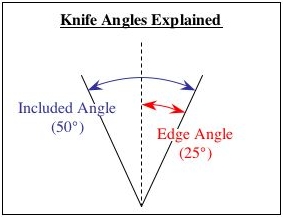Hi there folks,
I get a ton of questions on Nano Hone stones so I will give my honest impression. First though, note that I have only used the 70 Micron/200 grit stone. As far as coarse stones go, it's excellent, it did just what I expected it to do except one thing. I wore out just as quickly as any other stone but I did use it a lot, on hundreds of very very dull knives so keep that in mind. It is well packaged, it looks great, the water management is easy as is flattening and it fit my Shapton Holder perfectly. The only downside besides it wearing out is that price. There is no disputing that Nano Hone products are expensive, especially the flattening plates. For me to buy the best one that they sell, and the largest, the NL10 would be about $700 Canadian. Now they do claim that they won't wear out. We will have to see how that claim unfolds over the next decade.
I have talked to folks who have tried their other stones and have not heard anything negative except the pricing. The plates themselves are supposedly quite exceptional. Mr Stanley the creator, who was the Shapton USA President is obviously very knowledgeable and knows how to produce quality products. There is no doubt in my military mind that all of the stones sold by Nano Hone are very good.
 |
| This is what over steeling can do to a knife |
Now as you may know Mr. Murray Carter became involved with Nano Hone and has since ditched the products he used to use. Mr. Carter and Mr. Stanley started producing Videos demonstrating the Carter/Stanley method of sharpening. They are clearly highly skilled sharpeners and have a get production facility so the videos are professionally done.
I personally did not learn anything from them and in fact I don't necessarily agree with their approach. They, and this is just my humble opinion, place to much emphasis on thinning instead of focusing on Burr Formation, Burr Detection and Burr Removal.
Having said that, they are also trying to sell their new products so I get it. Who the hell am I anyway to place any negative thoughts on a sharpening video by the famed Murray Carter?
Well since this is my Blog I can, I didn't like the videos but I do like the products. I recommend searching for the Nano Hone videos on YouTube and checking them out. (By the way, if you thin a knife you can't get all the scratches out with higher grit stones, you'll need some other products like sandpaper.)
The bottom line is that the products are good and will make your dull knives sharp. Remember, it's not the stones, it's the technique so keep that in mind. If you're obsessed with water stones like I am you'll probably want to try them out, you won't be disappointed.
So for me, I liked my NH 70 Micron but not necessarily more than my Shapton Glass 220 but they are both really good stones. I didn't really like the first few videos but that is no big deal. They are well produced, much higher quality production than my videos but my focus is different, I don't have anything to sell so I can concentrate on the fundamentals.
Respectfully
Peter Nowlan










































